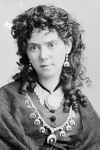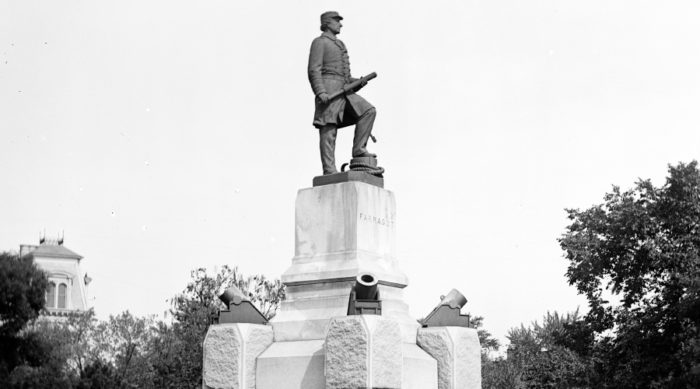
I began last week looking at times when the Washington Navy Yard was used to cast items that were not directly Navy-related. Today, we continue by looking at one of the statues in downtown D.C. and its creation.
David Farragut is one of the most famous officers in the United States Navy, having served during the War of 1812 as a 12-year-old and later building Mare Island Navy Yard in California during the Mexican-American War. It was for his actions during the Civil War that he became best known, becoming the first United States naval officer to be named rear admiral, and winning the Battle of Mobile Bay, during which he is reported to have said “Damn the torpedoes, full speed ahead.” (Full disclosure: He probably did not use those exact words, and, in fact, nobody is quite certain what he said, though the meaning was clear)
When Farragut died in 1870, it was immediately obvious that he should be honored, and that this should be in the form of a statue in a public park in Washington, D.C. Soon after, a competition for its design was announced, and in January, 1873, the models began arriving at the Capitol from all over the country. Ironically, it was the statue that had traveled the smallest distance – from 235 Pennsylvania Avenue NW – was the one that suffered the greatest damage. While being moved within the Capitol, the workers dropped it. Fortunately for the sculptor, Vinnie Ream [Pictured above], space was made in a corridor for her to affect repairs and it was displayed along with the other models.
Ream’s statue immediately leaped to the front of the list when President Grant, after examining the entries, said to her “Miss Ream, that is first rate.” Nonetheless, it took until early 1875 before she finally was given the commission. Her first job was to find a new studio space, as her own was too small for the larger statue she was to produce. Eventually, she bought a house behind hers and gutted it to make space.

Once the statue was completed, it was moved to the Washington Navy Yard for casting. Most likely, this venue was chosen due to her recent marriage to Richard L. Hoxie of the Army Corps of Engineers, who knew what the casting shop there was capable of. Ream finished her work at the Navy Yard, where she was a great favorite of the sailors stationed there. A man named Stinach was found to create the mould, he insisted on special sand being brought from France, his native country.
In the end, it took nine months to cast the six pieces of the statue and it was not until September of 1880 that it and its base were ready for installation. On September 29, the statue was placed in Farragut Square, and plans were begun for a grand unveiling. At first, the thought was to combine this with the Presidential inauguration in March of the following year, but eventually the event took place on April 26, 1881, the anniversary of Farragut’s victory in New Orleans.
